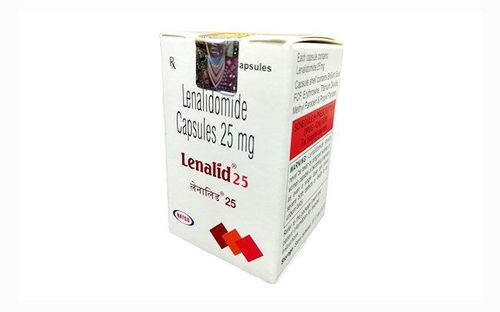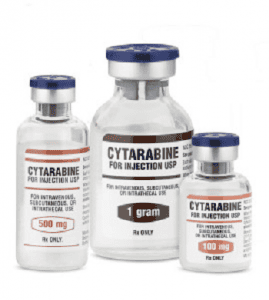This is an automatically translated article.
Belonging to the group of anti-cancer drugs, Zolinza is prescribed by doctors for the skin manifestations of a type of cancer called cutaneous T-cell lymphoma (CTCL). So to find out specifically what Zolinza does? how does it use? Side effects when using the drug through the article below.
1. What does Zolinza do?
Zolinza is the trade name of the active ingredient Vorinostat, which is used to treat T-cell cancers of the skin. Zolinza works by slowing or stopping the growth of cancer cells.2. How to use Zolinza
2.1. How to take Zolinza Take Zolinza by mouth, after meals as directed by your doctor, usually 1 time per day. When using, it is necessary to swallow the Zolina tablet whole, do not crush, chew or open the capsule. If skin or eyes come into contact with the powder inside Zolinza capsules, wash your skin with soap and water or rinse your eyes with water, then call your doctor for help. Drink at least 2 liters of water a day to avoid dehydration. Call your doctor if you have vomiting or diarrhea, especially if you have diabetes and cannot eat or drink normally. In addition, you may be given other medicines to help prevent nausea, vomiting, or diarrhea as directed by your doctor. 2.2. Zolinza Dosage The usual adult dose for cutaneous T-cell lymphoma is 400 mg orally once daily; if a patient is intolerant to therapy, the dose may be reduced to 300 mg orally once daily or dose may be reduced to 300 mg once daily for 5 consecutive days per week as needed
Use to treat cutaneous manifestations in patients with advanced, persistent cutaneous T-cell lymphoma or relapse on or after 2 systemic therapies.
3. Contraindications of Zolinza
Normally, people who are allergic to any substance in the composition of the drug should not use the drug. Other cases are specified in the drug leaflet or doctor's prescription.
4. Notes when using Zolinza
To make sure Zolinza is safe for you, tell your doctor if you have:Diabetes or high blood sugar Blood clots Liver disease Electrolyte imbalances (such as low blood potassium or magnesium levels) or Any Allergies Pregnant women should not use Zolinza. Tell your doctor right away if you are pregnant but are taking Zolinza. Do not breast-feed while using Zolinza for at least 1 week after your last dose. In addition, Vorinostat may affect heart rate, QT prolongation, tachycardia, severe irregular heartbeat, and symptoms such as dizziness and fainting. The risk of QT prolongation may be increased if the patient is taking medications that can also prolong QT, especially the elderly, so before using vorinostat, tell your doctor about all medications. taking or special medical conditions such as heart problems (heart failure, bradycardia, QT prolongation), family history of heart disease.
Low levels of potassium or magnesium ions in the blood may increase the risk of QT prolongation, especially when diuretics are used or if the patient has conditions such as excessive sweating, diarrhea or vomiting. .
5. Side effects of the drug Zolinza
Zolinza can cause serious side effects. If you have any of the following signs or symptoms, tell your doctor right away.
5.1. Signs of a blood clot in the legs - Deep vein thrombosis or DVT Legs that swell or feel warm Legs that hurt or feel very soft Legs that hurt when you stand or walk Skin that turns red or changes color 5.2 . Signs of a blood clot in the lungs - Pulmonary embolism or PE Sudden chest pain Shortness of breath Coughing up blood Sweating Very fast heartbeat Fainting Anxiety 5.3. Signs of Losing Too Much Fluid Due to Dehydration You may become dehydrated if you are unable to eat or drink as you normally would. This can happen when you feel nauseous, vomiting, or have diarrhea. Call your doctor if you get any of the following signs or symptoms:
Dry mouth Drowsiness Your skin is dry Dizziness or lightheadedness 5.4. Changes in your blood Your doctor will check your blood during treatment with Zolinza. Here is a list of some side effects that may require a blood transfusion:
More fatigue than usual Bleeding or easy bruising of the skin High blood sugar (may feel more hungry or thirsty, frequent urination) More often than usual) Pale Difficulty breathing Common side effects of Zolinza: Diarrhea, constipation, nausea, vomiting, weight loss, dry mouth, hair loss, muscle pain, itching, fatigue, dizziness, swelling in feet, ankles and legs, cold, cough, chills, fever, headache
6. How to store Zolinza
Store at room temperature away from moisture and heat.
Please dial HOTLINE for more information or register for an appointment HERE. Download MyVinmec app to make appointments faster and to manage your bookings easily.
Reference sources: chemocare.com, reference.medscape.com, oncolink.org, rxlist.com












